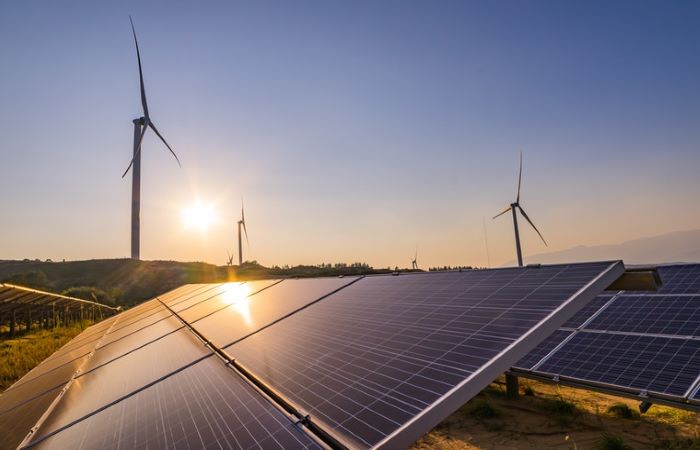India will be the largest contributor to renewable energy upswings next year, says latest research by the International Energy Agency (IEA). According to the study, renewable energy continued to flourish around the world even during COVID-19 crisis, while the fossil fuel sector witnessed sharp declines. India’s annual additions would be doubling from 2020, the report said.
India and the European Union will drive the global expansion of renewable capacity additions of nearly 10% next year — the fastest growth since 2015. The report stated that this is the result of the commissioning of delayed projects where construction and supply chains were disrupted by COVID-19 and growth in markets where the pre-Covid project pipeline was robust.
Andhra Pradesh sets up 30-year PPA to attract low tariffs for free solar power to farmers
The Andhra Pradesh government adopted the proposal to set up 10 GW of solar power capacity to supply nine hours of daytime free power to the agriculture sector.
Aiming to get lower tariffs during the bidding process, the government has introduced a 30-year power purchase agreement (PPA) instead of 25 years. The developers will be paid a flat tariff for the first 15 years and pre-fixed operation and maintenance charges from the 16th year of commissioning.
Under Biden, renewable fuels law would get bipartisan support?
US investors have said that if President-elect Joe Biden introduces the laws to back renewable fuels he will get bipartisan support even with a divided Congress. However, his larger plans to move the United States to a zero-carbon emissions scheme by 2050 may be thwarted. Investors pointed out that development of renewable fuels is supported by some in both the oil and green energy industries.
The United States consumes roughly 21 million barrels of renewable diesel per year, compared with 4.1 million barrels used every day for conventional distillate fuel oil, according to US Energy Department data.
Australian state to invest $23 billion energy roadmap in renewables push
The state of New South Wales (NSW) in Australia will shift toward renewable energy from coal. It aimed to attract $23.3 billion of private investment into the sector by 2030. The state will speed up approvals for businesses to invest in renewable energy projects, with four of its five coal-fired power plants expected to close in the next 15 years.
The plans would create close to 10,000 jobs and aim to bring 12 gigawatts (GW) of wind and solar power and 2 GW of storage, such as pumped hydro, online by 2030, state Energy Minister Matt Kean said in a statement. Australia has refused to match other developed countries in setting a target for net zero carbon emissions by 2050.
Kerala capital launches India’s first solar-powered mini train for tourists
Kerala launched the country’s first solar-energy driven miniature train especially for children and tourists. The ₹10-crore project will have the tourist train run in the outskirts of the state capital between the Veli lake upto the point it meets the Arabian sea.
The 2.5 km ride of the miniature rail comes with a tunnel, station and a ticket office. The train has three bogies that can accommodate around 45 people at a time. The surplus energy generated by the system will be routed to the Kerala State Electricity Board’s grid.
Firms in race to develop green hydrogen fuel to cut shipping industry emissions
Global companies for the first time are testing the use of green hydrogen to sail ships as the shipping industry finds technologies to cut emissions. Made from electrolysis to split water into hydrogen and oxygen using electricity from renewable energy, green hydrogen is emissions free.
Swiss-based technology group ABB is working on hydrogen fuel cell systems for ships. Green hydrogen fuel costs around 4-8 times the price of very low sulphur fuel oil. Prices of green hydrogen are expected to fall over the next couple of decades as the cost of renewable energy and electrolysers falls.
About The Author
You may also like
Converting Coal Mines to Solar Can Add up to 15% of Global Capacity: Report
One-third of SE Asia’s data centres can be powered by renewables by 2030: Report
Solar tenders plunge 53% YoY in Q1 2025, auctions drop 39%
ISTS Waiver Expiry Could Derail India’s 2030 Renewable Targets
India’s thermal coal imports rose by 58% in last decade, while import bill shot up by 124%: Report


